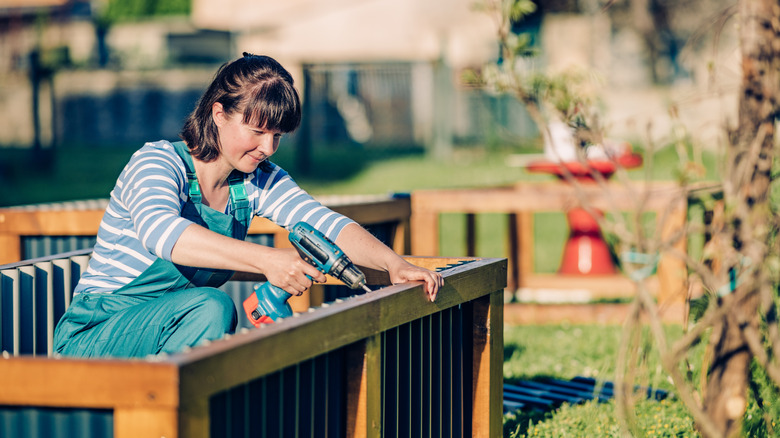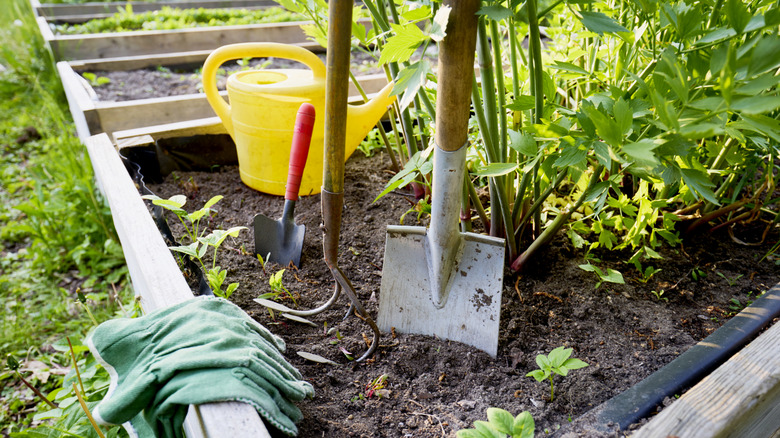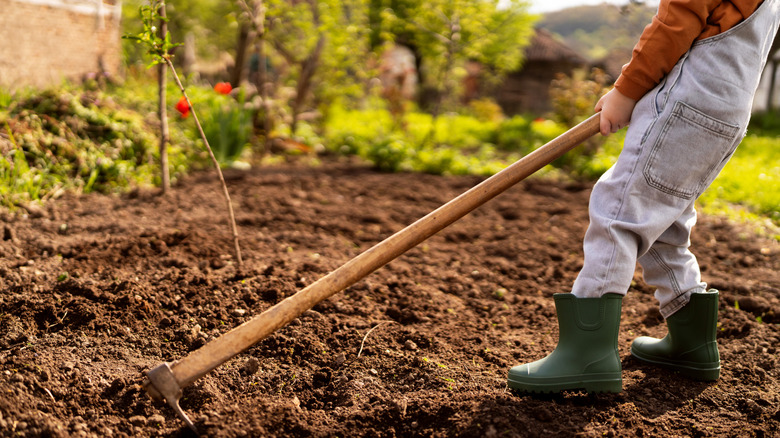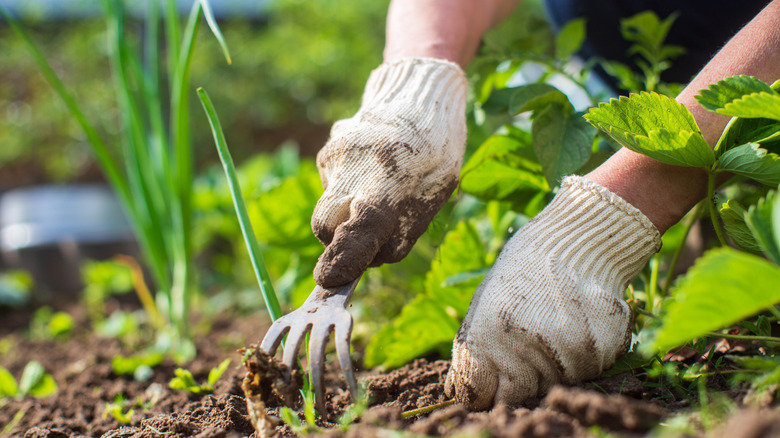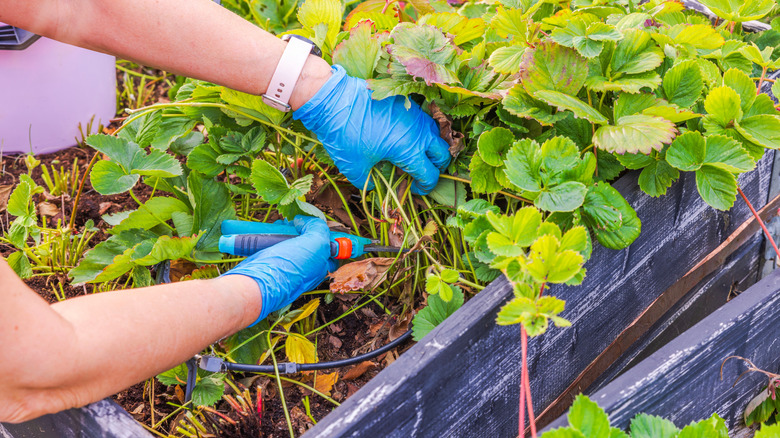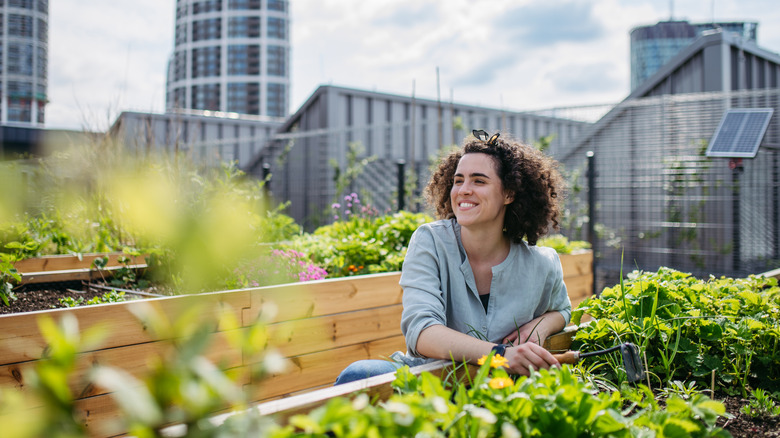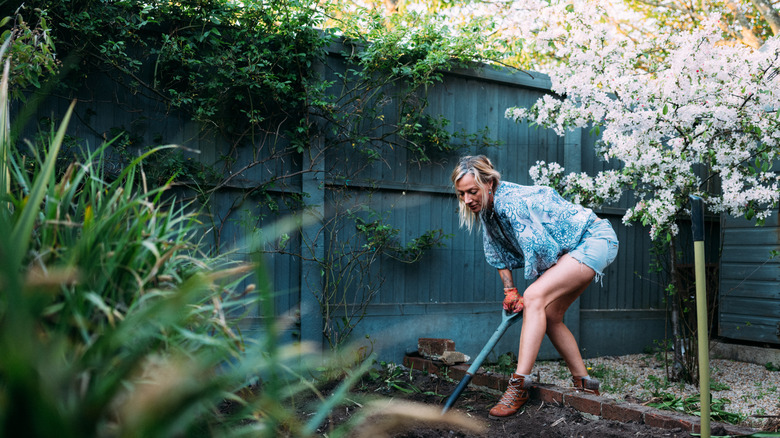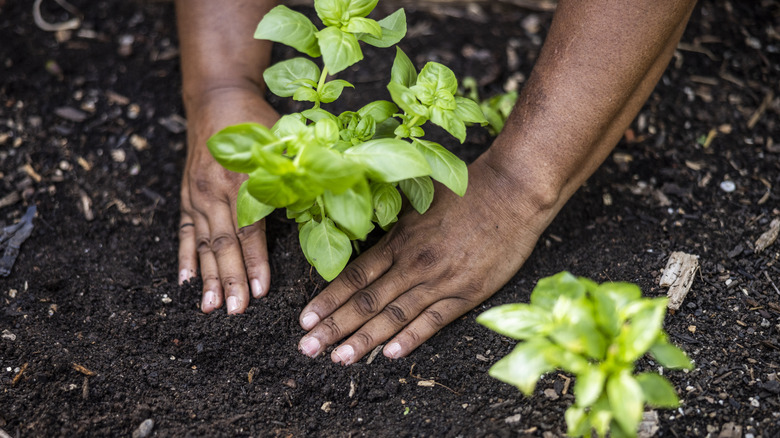Raised Beds Vs. In-Ground Garden Beds: Which Is Overall Better?
The world of gardening is filled with many discussions and differing viewpoints. What is the best type of mulch? Should I plant alliums in with my roses? Why is fall the worst time of year to prune perennials? And so on and so forth. However, if there is one gardening question asked more than any other it is whether or not raised beds are better than in-ground garden beds.
There is certainly a case to be made for both. Each has their pros and cons, but if we were to pick one above the other, we would choose raised beds. Our aim, over the course of this list, is to explain exactly why we believe raised beds are the better gardening option.
To help us flesh out our decision, we've enlisted the help of Rhonda Kaiser, Texas Master Gardener and Owner/Content Creator of Southern Home and Farm. She is a big proponent of raised beds, and will be using her expert experience to help us further explain why raised beds are, overall, better for gardening. "I primarily use raised beds for my vegetables and herbs," Kaiser elaborates. "Both can be used for annuals and perennials, but again, I find raised bed gardening for vegetables to be more advantageous than in-ground beds." Of course, there are certain drawbacks to using raised beds exclusively. However, the flexibility and abundance they offer make them the best of the two options. Let's dig in (pun intended).
Raised beds take a while to establish
It may seem strange to start our list with the biggest con raised beds pose, but it is worth discussing because it is a hurdle for some gardeners. A raised bed garden is one that is elevated up off of the ground to a certain height. Establishing a raised bed garden is therefore going to require some construction, which means you are going to have to purchase materials.
There are several ways to go about this. Prefabricated raised bed frames are a popular choice that can be purchased directly from a retailer or local hardware store. Depending on brand, bed size, number of beds, and manufacturing materials, prefabricated beds could end up costing you quite a bit, as could the materials you would need to build one from scratch. Naturally, if you are thrifty and don't mind a little sweat equity, constructing your own raised beds out of recycled materials is a more affordable option.
While the construction of your raised beds will yield good rewards, it does take a little time and money to get them built. Then, there comes the filling. Depending on their width and depth, your raised beds will require an awful lot of soil and natural material to fill. That's an additional cost that needs to be considered when deciding on raised beds.
Raised beds are easier to manage
Expert Rhoda Kaiser understands the upfront cost when it comes to raised beds. However, she notes, "I prefer raised beds as, once established, I find they are easier to manage. With the proper preparation and the addition of high-quality soil ... plants are not only able to grow but thrive." Soil prep is a key component here. We will get more into that later, but it is vitally important that, at the early stages of raised bed gardening, your soil is of the highest quality.
Additional management benefits will make themselves clear pretty quickly. Thanks to the fact that you are filling your beds with soft, established compost and soil, there is no need for tillage. You also have the benefit of complete control over what goes into your soil, plus the excellent drainage that comes with properly aerated loam. It's true that raised beds require more watering, but the trade off is that you won't have to worry much about weeds or compaction.
Overall, if you are working with limited space and want a garden that is relatively stress-free, raised beds are the way to go. They're especially good if you are persnickety when it comes to the contents of your soil, or if the existing soil on your property is limited or not usable.
In-ground beds are easier to establish
The main pro of an in-ground garden is the ease with which you can get one up and running. Most soil in the United States is perfectly good to plant in. You will certainly want to be amending that soil over time, but if you're looking for immediate results with less of an economic expense, getting an in-ground bed going is simple and affordable without much in the way of prep.
Unlike raised beds, in-grounds beds are pretty limitless when it comes to their size. Depending on how much land you have, you could establish enormous in-ground beds with little cash. There are several methods to get a bed started, but the most common is to dig into the ground and expose the soil via tillage. You could do this by hand, or rent/purchase a rototiller. No-till methods, such as the Back to Eden style, emphasize ground cover and compost amendments to loosen soil. These, however, take longer to get going.
Whichever avenue you choose, the simple fact remains that if you don't make beginner gardening mistakes, have a shovel, hoe, some seeds, and a bit of mulch, you can get a good garden going relatively quickly. These early efforts will need to be improved upon as years go by, but nothing is going to get you fresh-grown produce more affordably than an in-ground bed.
In-ground beds can be more difficult to manage
The chief drawback to an in-ground garden bed is the fact that they can be difficult to manage. A lot of this depends on the type of gardening methods used. However, there is no denying that what most people struggle with when it comes to in-ground gardening is weeds. It is a truth universally acknowledged that unless you keep on top of things, weeds will take total control of your garden. Martha Stewart's DIY weed killer and blue mist flowers are excellent ways to keep weeds out of your garden.
Another thing that can be more difficult to manage is the fact that natural ground soil stays colder longer. In-ground beds are at the mercy of the elements when it comes to planting. With raised beds, since they are their own self-contained units, they warm up faster, meaning you can get your garden planted faster.
Overall, an in-ground bed has the potential to be a lot more work than a raised bed. There are many ways you can manage an in-ground bed — mulching being one of the best. However, if you want to plant earlier and have total control over the soil you're planting in, you're better off with raised beds.
Perennials work best for in-ground beds
Even if you prefer raised beds for edible produce, you can still make room for in-ground beds on your property. "I use ground beds for more perennial shrub applications, such as borders around the home," said Kaiser. Perennials are plants that, once planted, continue to reseed and grow for years. Obviously, you want to be caring for them throughout their lifetimes. In general, however, most perennials can be planted once and not fussed over ever again.
If you're looking to spruce up the border of your yard, you might want to think of using perennial shrubs as hedging plants the way Kaiser does. Roses, azaleas, rhododendron, hydrangea, Veronica, and catmint are all examples of excellent perennial bordering plants. If you have shaded areas, there is a wide variety of colorful perennials that thrive in darker conditions.
Another reason perennials tend to thrive in in-ground beds is that they could get very squashed if confined to a raised bed. Think of larger shrubs, or even fruiting trees like apples, pears, and peaches. They are better off in the ground so their roots can grow deep and unconfined.
Weed control can be easier in raised beds
We mentioned earlier how one of the biggest positives of a raised bed is that weed control is much easier than with directly sown in-ground beds. Here's why. "I find weed maintenance is generally easier in raised beds, as you have a controlled environment. You have specific boundaries and can control what soil you're adding to the bed," says Kaiser
She also does some substantial bed preparation in order to properly deter weeds. "I properly prepare any garden space to deter weeds by first removing any grass or weeds from the ground. Then, I place a layer of cardboard (sans ink, as some can be harmful to your garden) or weed-blocking fabric, then I cover with at least 4 inches over organic matter or compost. Always do the same for pathways, too."
Kaiser also recommends adding at least 3 inches of mulch to your raised beds to keep any sneaky weeds at bay. While raised beds are easier to control, they are not totally immune to weeds. However, the softer soil and heavy mulching will lessen the presence of weeds. Any that show up will be easily removable thanks to the softness of the underlying soil.
Raised beds offer greater accessibility
One of the great things about the internet is that it has allowed better access to ideas and information. Such is the case with gardening and articles like this one. As a result, it is far easier to find garden plans that cater to those with mobility issues or physical disabilities. Raised beds are excellent in this regard, as they offer far more accessibility than in-ground beds do.
"Depending on the height, they are much easier to manage versus in-ground beds," says Kaiser. For those who have trouble bending over (or being on their knees for an extended period of time) and for wheelchair/scooter users, higher raised beds offer better ergonomics. As such, they make the physical act of gardening more comfortable and enjoyable.
Raised beds can also be constructed so that all the plants are easily within arms reach. A skinnier profile allows for easier access to the plants, though they tend to yield fewer rows. However, depending on how many beds can fit into your space without impacting your mobility, then it is worth it to better harvest your produce.
Certain plants won't grow well in raised beds
We've already mentioned that there are certain plants that are better suited to in-ground garden beds, but those have focused mainly on shrub perennials and fruiting trees. There are certain vegetables that will not thrive in a raised bed because their biology has requirements that raised beds simply cannot meet.
Two of the best examples are sweet corn and watermelons. With sweet corn, the space it requires in order to properly cross-pollinate, and therefore grow, is more than a raised bed can provide. The bed would have to be enormous to accommodate. Likewise, the space that vine growing watermelons require makes them better for in-ground beds as well. They could easily end up spilling over a raised bed and encroaching on others beds and vegetables.
Other produce that doesn't fare well in raised beds are pumpkins, squash, asparagus, mint, and rhubarb. With asparagus and rhubarb, their roots require a depth most raised beds will not be able to achieve. As for mint, it spreads so easily that you might as well dedicate an entire garden to it. Those types of spreading plants are better off in containers.
Raised beds make great use of space
When a raised bed is constructed in place, that spot tends to be where it is going to end up for the rest of its life. Sure, you could put in the effort to move them, but more often than not, a raised bed tends to be a more permanent solution than an in-ground bed. This can be seen as a con, but more often than not, the permanence of a raised bed is a pro. This is especially true if you are working with limited space.
One of the reasons raised beds have become so popular is that they so easily fit into an urban and suburban landscape. Empty lots have been transformed into community gardens, and raised beds can also add serious value to a home. Areas where there is more vertical than lateral space, such as small yards and rooftops, also benefit greatly from raised beds.
There are limits to what you will be able to grow based on the size of the lot and the raised beds you can fit into it. But even if it is a small crop of tomatoes or herbs, it's worth it to have some fresh produce on your plate.
Planting in-ground depends on soil type
While it may seem like a no-brainer, there are many beginning gardeners who don't understand that the natural soil in the ground plays a huge role in the success of growing crops. According to Kaiser, "In-ground beds are planted directly into your native soil and often need additional amending." What this means is that while the native soil will likely provide a decent amount of the nutrients the plants need, they are not 100%.
Soil types differ from place to place, but they generally vary between four different types: sandy, clay, loam, and silt. Each has different thicknesses and different chemical properties. They also vary in terms of pH levels. So, when it comes time to plant, certain produce does better in different soil thicknesses and pH levels. With raised beds, you have 100% control over the type of soil you put into your raised bed, and therefore don't have to worry about your native soil.
However, if you are planning on doing in-ground beds and don't really have a grasp on what type of soil you have in your garden, Kaiser has a recommendation. "If you are curious about your specific soil type and need more information, your local agricultural extension agency can assist." You can also purchase a soil test online and send it into a lab yourself.
In-ground beds are easier to irrigate
When it comes to watering, there is some debate over which is better: raised beds or in-ground beds. In short, in-ground garden beds are going to be easier to irrigate because they are much better at retaining water. Because they are already placed in the ground, overhead watering is sufficient to help the plants grow and, eventually, thrive. With raised beds, things are a little different.
"One drawback to raised beds is they have a tendency to dry out more quickly. This is where the addition of proper irrigation becomes a must," says Kaiser. So, the plus of the raised beds being warm earlier in the season is sort of drawn back when you consider that they will need to be watered more frequently. However, unlike in-ground beds, raised beds don't operate at their best when overhead watering is utilized.
"Drippers are always preferred versus overhead watering. This allows for slow water retention and a reduction in pest and disease issues," says Kaiser. Drip irrigation systems are relatively simple to set up, and can be found in virtually all hardware stores. You can also use PVC pipes, valves, and a garden hose to make your own DIY raised bed irrigation system.
High quality soil matters
Regardless of the type of bed you are working with, if you don't have quality soil in your garden you are not going to get a good crop yield. Now, there are many gardeners who spend years improving the soil quality of their gardens through rigorous compositing and crop rotation. With raised beds, you can have all of that right from the get go. You can purchase quality organic soil from an Agway, hardware store, or local farm. Even then, however, Kaiser has some additional steps to recommend.
"I use a mixture of equal parts, peat moss, vermiculite, and blended compost," she says. What this does is create additional growth and nutrients, especially with the addition of worms, that are excellent for breaking down organic material and helping soil become healthier over time. The benefit of doing it with raised beds is that by using quality bagged soil, you are ahead of the curve.
While we believe that they are the better overall choice, it is up to you whether or not you want to put in the effort of establishing a raised bed garden. If you do, though, we guarantee that you will find it a fruitful and rewarding endeavor. And, if you already are a devotee of in-ground beds ... can we have some of your watermelon?

